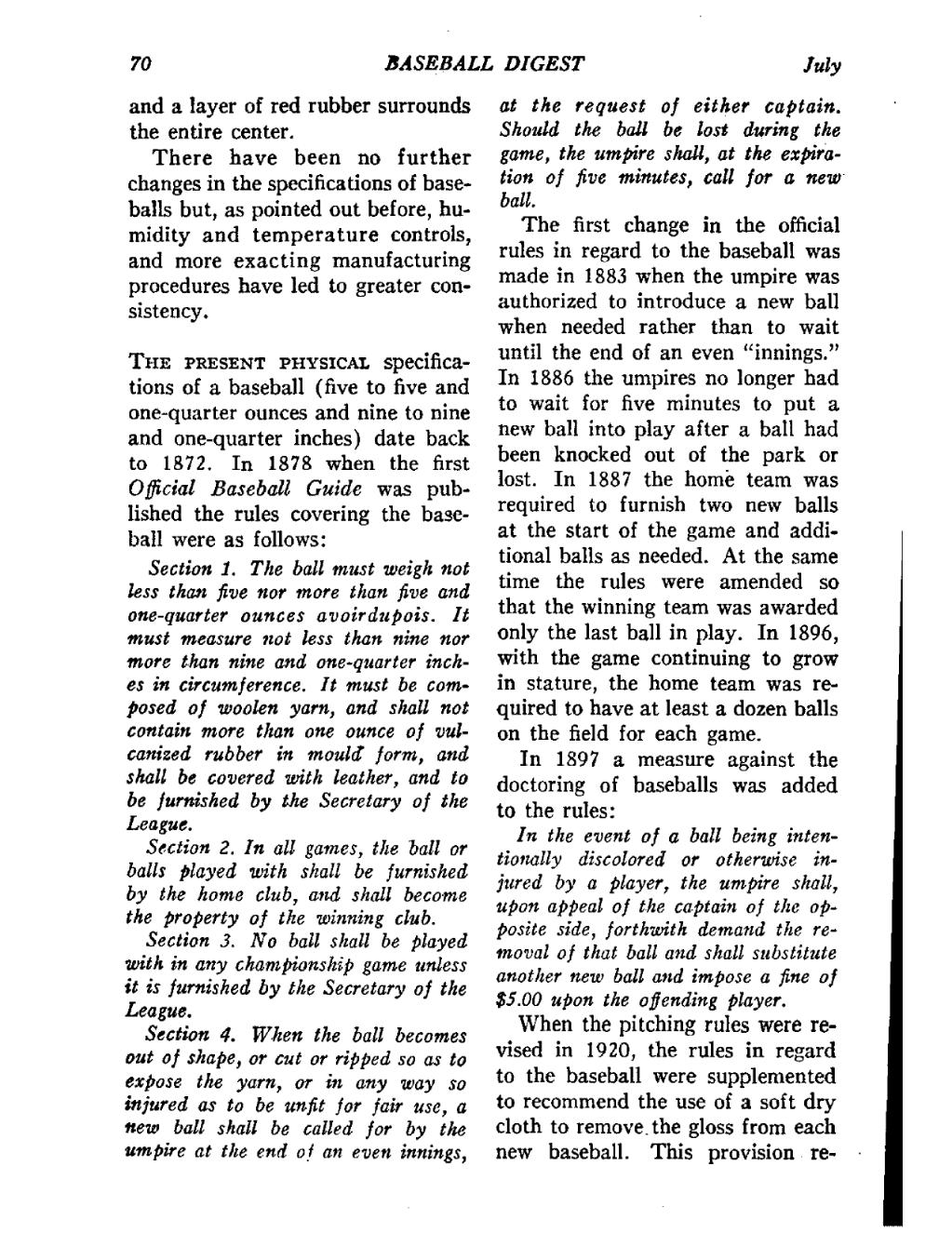and a layer of red rubber surrounds the entire center.
There have been no further changes in the specifications of baseballs but, as pointed out before, humidity and temperature controls, and more exacting manufacturing procedures have led to greater consistency.
The present physical specifications of a baseball (five to five and one-quarter ounces and nine to nine and one-quarter inches) date back to 1872. In 1878 when the first Official Baseball Guide was published the rules covering the baseball were as follows:
Section 1. The ball must weigh not less than five nor more than five and one-quarter ounces avoirdupois. It must measure not less than nine nor more than nine and one-quarter inches in circumference. It must be composed of woolen yarn, and shall not contain more than one ounce of vulcanized rubber in mould form, and shall be covered with leather, and to be furnished by the Secretary of the League.
Section 2. In all games, the ball or balls played with shall be furnished by the home club, and shall become the property of the winning club.
Section 3. No ball shall be played with in any championship game unless it is furnished by the Secretary of the League.
Section 4. When the ball becomes out of shape, or cut or ripped so as to expose the yarn, or in any way so injured as to be unfit for fair use, a new ball shall be called for by the umpire at the end of an even innings, at the request of either captain. Should the ball be lost during the game, the umpire shall, at the expiration of five minutes, call for a new ball.
The first change in the official rules in regard to the baseball was made in 1883 when the umpire was authorized to introduce a new ball when needed rather than to wait until the end of an even "innings." In 1886 the umpires no longer had to wait for five minutes to put a new ball into play after a ball had been knocked out of the park or lost. In 1887 the home team was required to furnish two new balls at the start of the game and additional balls as needed. At the same time the rules were amended so that the winning team was awarded only the last ball in play. In 1896, with the game continuing to grow in stature, the home team was required to have at least a dozen balls on the field for each game.
In 1897 a measure against the doctoring of baseballs was added to the rules:
In the event of a ball being intentionally discolored or otherwise injured by a player, the umpire shall, upon appeal of the captain of the opposite side, forthwith demand the removal of that ball and shall substitute another new ball and impose a fine of $5.00 upon the offending player.
When the pitching rules were revised in 1920, the rules in regard to the baseball were supplemented to recommend the use of a soft dry cloth to remove the gloss from each new baseball. This provision re-
